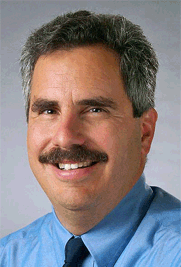Research is Important, but so is Teaching
November 15, 2010

Robert Mathieu
Some federal funding agencies, including the National Science Foundation (NSF), have begun demanding visible, practical results of funded research. Calls for research proposals now require that scientists describe how their proposed research will have “broader impacts” by contributing to the growing fund of knowledge and to the near-term public good. As an example, the technology-transfer offices found on many campuses help researchers to increase the commercial effect of their research.
Broader impact activities can include teaching the public, translating research results into instructional materials for classroom use, and increasing the participation of groups that are under-represented in science because of gender, ethnicity, disability, and/or geography.
The Center for the Integration of Research, Teaching, and Learning (CIRTL) works to improve STEM (science, technology, engineering, and mathematics) teaching and learning by preparing graduate students and post-doctoral fellows to be future faculty who are bothexcellent researchers and excellent teachers.
CIRTL is an NSF Center for Learning and Teaching, and the UW-Madison is home to the prototype learning community, the Delta Program in Research, Teaching, and Learning. Delta offers a curriculum of graduate courses, intergenerational small-group programs, and internships in an interdisciplinary learning community. It’s part of a network of sister projects at Howard University, Michigan State University, the University of Colorado at Boulder, Texas A&M University and Vanderbilt University. Together they develop models of professional-development programs in teaching and learning for graduate students and faculty in STEM disciplines.
CIRTL project director Robert Mathieu, chair of the UW Astronomy Department, says the CIRTL Network aims to create a national STEM faculty who can forge successful research careers while advancing effective teaching and learning practices. Their testimonials (see sidebars) reflect this emphasis.
Equally important, Mathieu says, CIRTL will continue to influence the culture of higher education in STEM. Mathieu and colleagues plan to expand the network to 20-25 universities. Their ultimate goal is for any U.S. research university that wants its own CIRTL learning community to have one. In testimony before the House subcommittee on Research and Science Education in February 2010, Mathieu explained that, as the CIRTL network matures, the current universities will become nodes of many unique, and highly connected, campus-based learning communities at research universities across the nation. Each community will offer its future faculty—graduate students and post-docs—the opportunity to learn and connect with others across the network, to share best practices among researchers and other professionals, and to develop the expertise to effectively broaden research impacts.
WCER researchers Shihmei Barger and Mark Connolly are conducting a 5-year, multi-institutional examination of the short- and long-term effects of this future-faculty professional development program. They several research questions, including: (a) What are the general characteristics of such programs, and which characteristics are most strongly correlated with positive and negative participant outcomes? (b) What characteristics distinguish program participants from nonparticipants, and what encourages and discourages participation? and (c) What do doctoral students gain from these programs that helps prepare them for diverse academic careers? The study will make important contributions to the scholarly literature on postsecondary faculty and should produce useful information about the characteristics of these programs, factors that influence participation, benefits of participating in the programs, and broad trends in where STEM PhDs take jobs.
At the same time, Connolly and Co-P.I. Shihmei Barger are leading the Longitudinal Study of Future STEM Faculty (LSFF), a five-year NSF-funded research project that is based in part on the Delta longitudinal study. Because better preparing future STEM faculty for their essential role as teachers and mentors is believed to be a key to improving undergraduate STEM education, Connolly’s research group is examining the effects of “future-faculty” programs on STEM doctoral students, their career choices, and their early-career success. The study includes three research universities—UW-Madison, the University of Washington-Seattle, and Arizona State University—that not only produce large numbers of STEM PhDs each year, but also provide various TFPD programs and activities. Like the Delta study, LSFF is using in-depth interviews with nearly 80 TFPD participants to gauge the impact of these programs. However, the study is also tracking and surveying more than 2,000 late-stage doctoral students in STEM departments at the three participating institutions. Using both survey and interview data, Connolly’s group is determining which factors explain doctoral students’ participation in TFPD programs, what knowledge and skills participants gain from TFPD programs, and what long-term effects, if any, participation has on their subsequent academic careers. And because the five-year study is following the 2000+ study participants into the various kinds of positions and institutions they take, the study will play a critical role in identifying broad trends in the kinds of academic positions STEM PhDs are currently taking.
Some material adapted from “Leveraging the NSF Broader-Impacts Criterion for Change in STEM Education,” in CHANGE, May-June 2009, and from “Science For The Masses,” NATURE, May 2010 .


